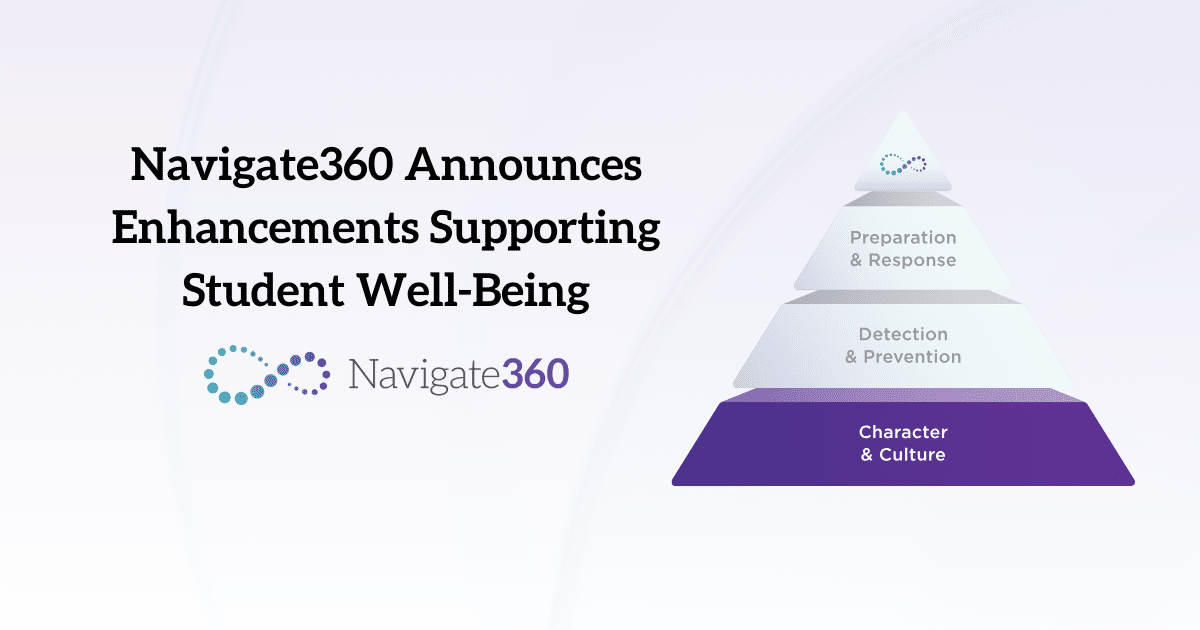An emergency operations plan (EOP) is a crucial aspect of preparedness for any organization, and each school within a district has their own specific needs when it comes to theirs. The COVID-19 pandemic has thrust schools’ emergency response plans into the spotlight, highlighting many gaps in preparation such as minimal or nonexistent planning for cybersecurity or communicable disease threats. Additionally, many schools are returning to in-person learning and discovering that their EOP is at least two years out of date, having been last updated before the pandemic.
This under-preparedness can certainly be felt by students. A recent John Zogby Strategies/Navigate360 poll found that less than 40% of teens ages 16-17 feel that their school has a comprehensive plan to deal with an emergency, with only 42% believing schools were spending enough time and money to keep students safe. These concerns reflect the need for schools to develop better plans that more accurately address the real issues students and faculty will face during emergencies.
Understanding & Applying Lessons Learned During the Pandemic
Thankfully, a well-researched and regularly updated EOP can alleviate the concerns of students and faculty alike by providing clear direction and planning for emergency scenarios. And while the COVID-19 pandemic has been unprecedented in its upheaval of the education system, hard-earned wisdom gained during this difficult time can be applied to EOPs, both improving the ongoing situation and preventing and improving responses to future crises. So, what knowledge from the pandemic can educators apply to their emergency response plans?
Emergency Response Plans Must Be Robust & Wide-Ranging
Even in recent years, many schools would not have a response in their EOP for communicable diseases, but COVID-19 has reinforced the need for schools to be prepared for any threat, including ones that have emerged since the plan was last updated.
In the past, EOPs could be expected to cover fires and severe weather. While those threats are still prevalent, modern EOPs must also include contingency plans for a wider range of emergencies including cybersecurity threats, extreme weather, natural disasters, medical emergencies, self-harm, and active assailant events and bomb threats. Further, new EOPs need more comprehensive plans that don’t leave gaps in procedure and that clarify the roles of all faculty, staff, and students.
With a robust emergency procedure in place, students and faculty can both feel more confident during times of crisis and respond quicker and more efficiently, helping to mitigate disruption and danger.
Drills Need to Be Updated
Along with the need for new plans, drills and training simulations also need to be reviewed and refreshed to address new concerns. If your school is like many others across the country, it has been over a year since any in-person emergency drills have been trained or performed, meaning students and faculty will be unpracticed. Plus, for many schools, there are now effectively two grade levels of students that have never received in-person emergency training due to nearly two school years of distanced or virtual learning. All these students, along with any new staff, will require updated and regularly implemented drills to be fully prepared and acclimated to new procedures.
Students Are More Concerned About Their Safety
While research into the psychological and emotional effects of the COVID-19 pandemic is ongoing, recent studies have made it clear that teens have grown more concerned about their overall safety and wellbeing since the pandemic began.
In the same Zogby/Navigate360 poll referenced above, more than half of teens surveyed are thinking more about their emotional and physical wellness and safety compared to six months ago. For students in large metropolitan areas, the figure is even more striking, with 75% more concerned than the previous six months. And, with 35% of teens reporting that they feel “least safe” at school—compared to their home, jobs, and restaurants—there is a true need for better, more comprehensive plans to increase students’ confidence in their schools’ safety and overall emotional wellbeing. These plans must address modern emergencies that may have gone unnoticed in the past.
Working in tandem with better EOPs and social-emotional learning (SEL) programs such as Navigate360’s Social-Emotional Learning and Restorative Curriculum can help students better understand and respond to their own emotional needs, fostering improved mental health across the student body. With improved mental and emotional wellbeing for students, some emergencies like self-harm and violence to others can be avoided before they begin, making SEL a valuable tool for emergency preparation.
Schools Can Benefit from Emergency Federal Funding
In March of 2020, Congress began providing emergency federal funding for school districts to address emerging issues related to COVID-19. These emergency funds are established under the Elementary and Secondary School Emergency Relief (ESSER) Fund and can be a boon to schools that need help improving their emergency preparedness. With nearly two trillion dollars in aid, schools can potentially use additional resources to develop and expand their EOP.
EMS: Emergency Planning Made Simple
By now, it’s probably clear that a viable emergency response plan must be a comprehensive, living protocol that is updated and reinforced regularly—which is much easier said than done. Enter the Navigate360 Emergency Management Suite (EMS). This robust software includes solutions for many of the problems you will likely face when creating and deploying an EOP, giving you everything you need in one convenient platform. EMS provides templates for EOPs that can be accessed at the click of a button and provide clear instructions and descriptions of procedures. Call lists, reunification procedures, virtual record keeping, drill logs, and important documents—all these tools are available at your fingertips in a convenient, digital package that is easy to use and adaptable to your school’s needs. EMS also facilitates vital real-time communication between first responders and school personnel.
Develop the Plan Your School Needs
With schools returning to in-person learning, now is the time to carefully appraise your school’s EOP and identify what you can do to ensure the safety of your staff and students. Rely on Navigate360 EMS for everything from compliance to drill management for a comprehensive, single source of truth emergency plan. Best of all, many allowable activities under ESSER are covered with Navigate360 EMS software. Learn more about Navigate360 EMS here.




